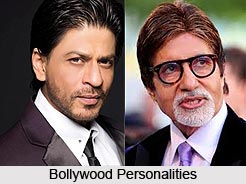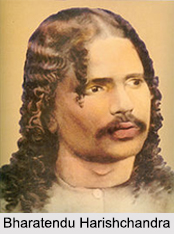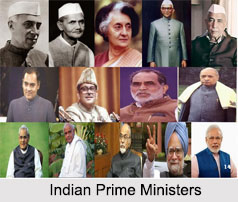 Satyendranath Bose was a physicist and an Indian mathematician. He was renowned for his association with Albert Einstein in forming a theory concerning the gas like virtues of electromagnetic radiation. Satyendranath Bose is most celebrated for his research on quantum mechanics and providing the basis for Bose-Einstein statistics in the early 1920s. Satyendranath also worked on the theory of the Bose-Einstein condensate.
Satyendranath Bose was a physicist and an Indian mathematician. He was renowned for his association with Albert Einstein in forming a theory concerning the gas like virtues of electromagnetic radiation. Satyendranath Bose is most celebrated for his research on quantum mechanics and providing the basis for Bose-Einstein statistics in the early 1920s. Satyendranath also worked on the theory of the Bose-Einstein condensate.
Early Life of Satyendranath Bose
Satyendranath Bose was born in Kolkata, then known as Calcutta and was the first born among the seven children of his parents. He was the son of Surendranath Bose who worked in East Indian Railway Company. He was the only son with six sisters born after him. Bose went to school at the age of five. Then his school was in the vicinity. Later his family moved Goabagan where he was admitted to the New Indian School. When he was in the final year of his schooling he was sent to the Hindu School. He ranked fifth in his matriculation exam in 1909. He next joined the Presidency College of Kolkata. There he was taught by eminent teachers Jagadish Chandra Bose and Prafulla Roy. Bose had remained a brilliant student all through his life and had excelled in every academic examination of his life. For his B.SC Bose chose mixed or applied mathematics and stood first in his exam in 1913. He also came first in the M.SC exam in 1915. After this he joined the University of Calcutta in 1916 as a research scholar. He began his research in the theory of relativity.
Career of Satyendranath Bose
During the period 1916 to 1921, Bose had remained as a lecturer in the department of Physics in the University of Calcutta. In the year 1921, he joined the Physics Department of the Dhaka University. In 1919 along with Meghnad Saha, Bose prepared his first book in English. It was a translation of Einstein`s special and general relativity papers into German and French. He also joined as Reader in 1921 in the department of Physics of the University of Dhaka. She is credited with setting up new departments as well as laboratories that taught advanced courses for M.Sc. and B.Sc. honours.
In the year 1924, Bose presented a seminal paper on quantum statistics. Initially his paper was not given much importance. Bose then sent it to Albert Einstein in Germany. Einstein later realised the importance of his paper and translated it into German and submitted it on Bose`s behalf to the prestigious Zeitschrift fur Physik. Eventually Bose got the opportunity to leave India for the first time. There he worked with eminent people like Louis de Broglie, Marie Curie, and Einstein.
Bose returned to Dhaka in 1926 and worked as the Head of the Department of Physics and continued being a professor at the Dhaka University till 1945. Bose designed equipments himself for X-ray crystallography laboratory. With Meghnad Saha he also published an equation of state for real gases. He also set up laboratories to construct a center for research on X-ray spectroscopy, X-ray diffraction, magnetic properties of matter, optical spectroscopy, wireless, and unified field theories. Until 1945 he also served as the Dean of the Faculty of Science at Dhaka University. During the partition of Bengal, Bose returned to India and had started teaching in the University of Calcutta. He retired in the year 1956.
The main contributions of Satyendranath Bose were his papers on statistical mechanics, the electromagnetic properties of the ionosphere, the theories of X-ray and many more. During his lifetime Bose had met many eminent scientists like Marie Curie, Meghnad Saha and had worked in collaboration with them.
Personal Life of Satyendranath Bose
 Besides physics, Satyendranath Bose had a lot of interest in many other fields like biochemistry and literature. His interest in literature included studies both in English and Bengali. Bose had made adequate research in the fields of zoology, engineering, chemistry, anthropology, geology, and other related subjects. Satyendranath also made adequate contribution in promoting the Bengali Language. Bose wanted to make Bengali a teaching language and had translated a lot of papers of science in to Bengali. Bose was not just a scientist he had multiple talents. He could speak fluently in several foreign languages like Bengali, English, French, German and Sanskrit as well as poetry of Lord Tennyson, Rabindranath Tagore and Kalidasa. Satyendranath Bose was also very fond of playing a musical instrument known as Esraj. He is also known for running night schools that was known as the Working Men`s Institute. Satyendranath Bose was married to Ushabati at the age of 20. They had nine children.
Besides physics, Satyendranath Bose had a lot of interest in many other fields like biochemistry and literature. His interest in literature included studies both in English and Bengali. Bose had made adequate research in the fields of zoology, engineering, chemistry, anthropology, geology, and other related subjects. Satyendranath also made adequate contribution in promoting the Bengali Language. Bose wanted to make Bengali a teaching language and had translated a lot of papers of science in to Bengali. Bose was not just a scientist he had multiple talents. He could speak fluently in several foreign languages like Bengali, English, French, German and Sanskrit as well as poetry of Lord Tennyson, Rabindranath Tagore and Kalidasa. Satyendranath Bose was also very fond of playing a musical instrument known as Esraj. He is also known for running night schools that was known as the Working Men`s Institute. Satyendranath Bose was married to Ushabati at the age of 20. They had nine children.
Awards of Satyendranath Bose
In 1954, Satyendranath Bose was honoured by the Government of India with the Padma Vibhushan Award, a prestigious civilian award. Although Satyendranath Bose never received the Nobel Prize in his life time but researches related to his works of the Bose-Einstein condensate and Bose-Einstein statistics received a few Nobel prizes including the Nobel Prize in Physics in 2001. Bose had also been made the General President of Indian Science Congress and in 1958 he was made a fellow of the Royal Society.
Satyendranath Bose died on February 4, 1974. Bose was an eminent scientist of India who had made notable contribution in the field of science throughout his life.






